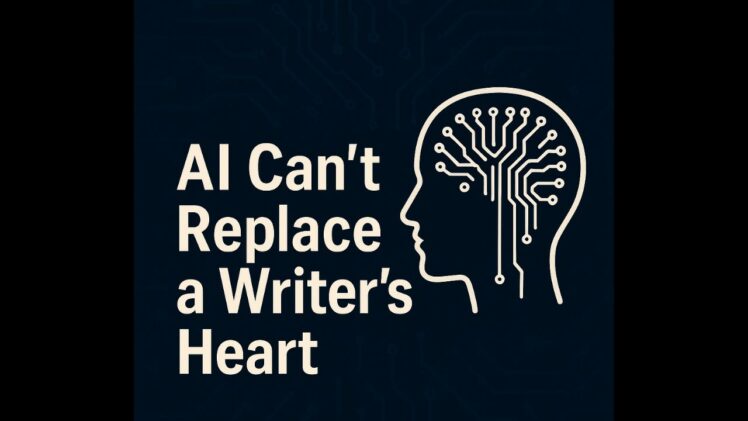
SHILLONG:
Every article has a voice — and AI’s voice, no matter how polished, is not its own – endorsing this adage, seasoned columnist and Editor of The Shillong Times, Patricia Mukhim said an article without a ‘heart’ or ‘emotions’ are just words on a plain A4-size document or a page – and that is what AI-generated articles read like – a well-scripted piece with astounding language but bereft of feelings.
Drawing the attention of the audience to the meaning of Artificial Intelligence, Mukhim said, the word itself – ‘artificial’ is self-explanatory. It means ‘fake’ and ‘unreal’. “So if that intelligence is fake and unreal – to what extent can I use it?” she questioned.
She, however, admitted that a few AI tools like spell checks and thesaurus are helpful tools to keep track of grammatical mistakes and amplify the language but to have an article written by AI is not advisable as it widens the disconnect between the writer and his/her understanding and meaning of the subject he/she wishes to convey.
The seasoned journalist highlighted her views at a panel discussion on ‘Media Laws & Ethics, and the impact of Artificial Intelligence’, moderated by Dr. Kamaljit Chirom, the Assistant Professor, JMC NEHU.
The discussion was part of the Vartalap (conversation) – a media workshop on Centrally Sponsored Schemes in Meghalaya, Media Laws & Ethics, and Artificial Intelligence, organized by the Press Information Bureau (PIB) Shillong in collaboration with the Planning Department, Government of Meghalaya and the Department of Journalism and Mass Communication, NEHU at the Raj Bhavan on August 22.
“I have been writing articles since 1987 and I know how much it takes to write something that you feel very strongly about and AI can never replicate that,” she revealed.
Can AI do investigative journalism? The answer is No. If a story is about the lives of rural folks and the challenges they face, “I would have to personally go to the village, sit across a young single mother of three, talk to her, understand her pain and problems. Will AI understand that emotion?” she said, while nodding in disagreement.
Meanwhile, Prof H Srikanth from the Department of Political; Science NEHU, argued that AI is part of the technological change that the world is witnessing. He stated that there is a rapid development of technology which influences us in different ways – the way news is disseminated and circulated, consumed and expressed.
Has the content of the news changed just because of AI? Prof Srikanth replied in the negative. “The content of the news depends on who regulates it – their political ideologies and agendas. We have to understand the nature of the media industry in India – it is not so independent; it is controlled by some certain political elites,” he observed.
He added, “The world may change but the essence of the news remains the same.”
Speaking about upholding journalistic ethics, Oineetomt Ojah, the Associate Editor of Northeast Live observed that in the field of journalism, there can be no room for errors, no compromises and no complacency.
“It is a challenging profession – as a journalist, I am supposed to give information to everyone and I cannot be wrong – I have to ensure there is accuracy and objectivity,” Ojah said.
In a world where breaking news are dominating every social media platform, Ojah said, gone are the days when newspapers come in the morning; today you get news here and now – that is how fast news have become.
ALSO READ:
READERS’ COLUMN || Proper Implementation of Law Is Meghalaya’s Only Path to True Progress
“Yes, we have to be fast but we also have to be accurate and correct. It is alright to be 30 seconds late but ensure your report is correct – In this digital and social media age, a wrong information can create havoc in our society – we journalists have a lot of responsibilities on our shoulders. We have to make sure that what we write is correct – every word weighs heavily,” Ojah said.
Similarly, Mukhim stressed on the need to verify the source of information – to establish the context and to verify the pictures or videos, adding that there are pictures and videos that have the potential to escalate tension or violence, especially in a region like Northeast India that is very ethnic and diverse.
Earlier, two sessions were held as part of Vartalap – a hands-on session on ‘AI for Digital Readiness and Advancement’ conducted by Prof Suresh Chandra Nayak from Royal Global University, Assam and the ‘Legal Aspects of Media Law and Ethics in the context of Meghalaya and the Northeast’ by Advocate Melamshwa Allya.
The inauguration of Vartalap witnessed the participation of Meghalaya Governor CH Vijayashankar and Information & Public Relations Minister Ampareen Lyngdoh.

Addressing the gathering, the governor, emphasised the importance of effective utilization of Centrally Sponsored Schemes. He said, “Schemes are designed to benefit people, but their success depends on how well they are implemented and how effectively citizens are informed. The present Union Government has placed particular emphasis on the Northeast, and Meghalaya is receiving due attention in agriculture, horticulture, and infrastructure. The bridge between the Union and the State is crucial, and media has a vital role in ensuring that information about these benefits reaches the people.”
In her keynote address, IPR Minister Ampareen Lyngdoh described Vartalap as an important dialogue platform. “This meeting of minds and exchange of ideas is a constructive space that must lead to definitive results, where information about Centrally Sponsored Schemes is properly disseminated through the media to the public. Often misrepresentation of facts creates confusion, and that is why the value of authentic information is so important,” she said.
Journalists, students, researchers, professors from various universities and senior officials from state government and North Eastern Council attended the programme.







